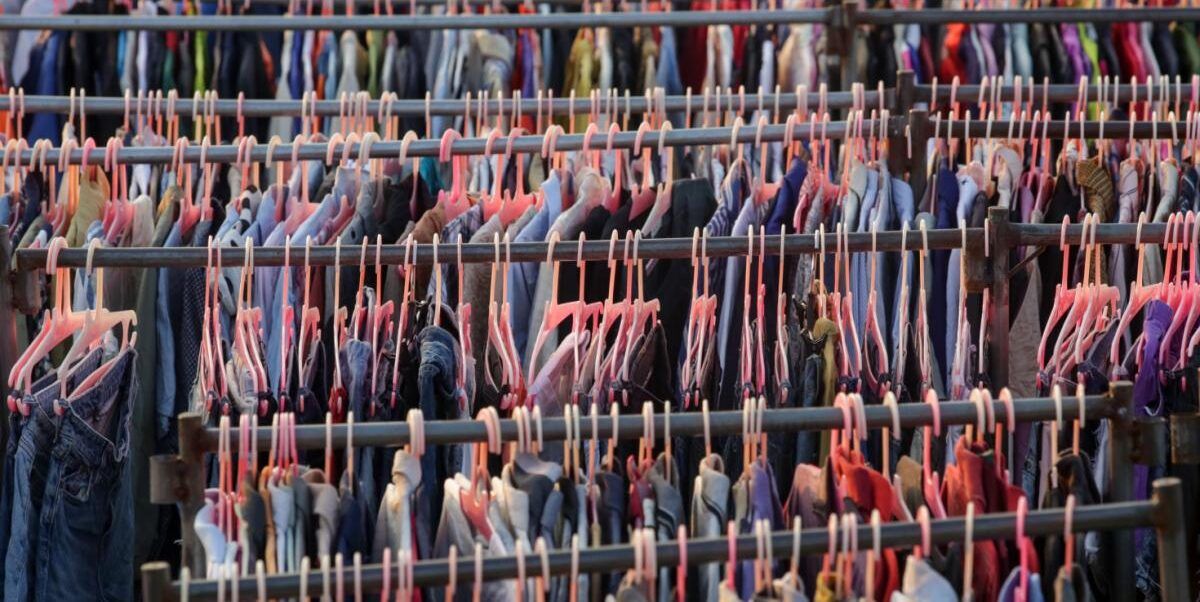Fashion brands should prepare themselves for a wave of stricter sustainability rules and requirements on their way over the next two to four years, which looks set to spur a scramble for lower-climate impact raw materials across the textile industry.
That is the clarion call in a new report led by consulting giant BCG, which argues large fashion brands that introduce strategies to reduce their consumption of virgin materials in order to get a jump-start in the race for more sustainable alternatives could unlock a “£100 million opportunity” over the next five years.
The report, published in collaboration with non-profit Textile Exchange and consultancy Quantis, warns that the fashion industry is facing an unprecedented amount of impending regulation focused on the environmental impact of products and materials. It highlights 35 new pieces of sustainability-linked regulation set to come into force worldwide over the next two to four years, from import restrictions to product design guidelines to new labeling requirements, for instance the U.K.’s Green Claims Code, designed to crack down on misleading “green” labeling on products.
The fashion industry is facing an unprecedented amount of impending regulation focused on the environmental impact of products and materials.
But despite the intensifying regulation and the growing mainstreaming of decarbonization targets across the fashion and apparel industry, the report argues that suppliers are not yet receiving a strong enough signal of the need to scale up “preferred raw materials” — defined as materials with reduced climate impacts, either because they come from sustainably sourced renewable sources or are made from recycled textile waste. Based on current trends, it warns just 19 percent of materials on track to be produced by 2030 are set to constitute these “preferred” materials, which is likely to lead to a major shortfall as demand for these greener raw materials ramps up.
Report co-author Jocelyn Wilkinson, a partner at BCG, said it was critical that firms set out plans for how they plan to get ahead of regulation and reduce the materials supply shortage in order to avoid supply chain challenges further down the line as green regulations start to bite. “Fashion and apparel brands face a two-part challenge: they must double down on driving carbon reduction while preparing for upcoming regulations,” she said. “Success on both counts relies on a robust strategy for preferred raw materials — one that helps brands lock in a supply of sustainable materials for the future. Putting that strategy into immediate action promises to pay off.”
There are two broad reasons firms stand to benefit from getting ahead on this agenda, according to the research. The first is surrounds regulation: The report argues brands which fail to transition away from high-carbon virgin materials could see products denied from certain markets, calculating that as much as 8 percent of brands’ earnings before interest and taxes are at risk from non-compliance with new rules.
Success on both counts relies on a robust strategy for preferred raw materials.
The second reason is about sending the right signals to the producers, farmers and growers responsible for building out supply chains for a new generation of fashion materials. With the demand for more sustainable materials on track to exceed supply by more than 133 million tonnes by the end this decade, buyers of raw materials need to club together to highlight demand for less environmentally taxing material types. A run on these “preferred” raw materials will hurt business revenues in the long run, with products’ final cost largely determined by the price of raw materials, the report notes.
Despite a transformation of materials purchasing processes involving an upfront costs, there are significant gains to be made in the long run by doing so, according to BCG. The report calculates that companies which successfully increase their share of preferred raw materials in their portfolio are positioned to capture an average profit increase of 6 percent over a five-year period. In other words, a fashion brand with $1 billion in revenues has the potential to rake in an extra $100 million, it estimates.
“These investments might be seen as a cost burden,” the report states. “They are not, really, when you consider their crucial role in a brand’s future and the potential returns, including reduced GHG impacts. They provide the foundation to monitor progress and formulate action plans to achieve targets, meet regulatory requirements, identify risks and better engage with stakeholders.”
It is fair to say that, in the main, the fashion industry does not have the strongest track record on environmental sustainability. A BCG review of 76 brands across the luxury sector referenced in the study notes that that just 15 percent were found to comply with the guidelines of the 2015 U.K. Modern Slavery Act. Meanwhile, McKinsey has previously calculated that the sector’s emissions in 2018 amounted to roughly 4 percent of the global total — or roughly the same quantity of greenhouse gases annual than the economies of France, Germany and the United Kingdom combined. It is therefore clearly critical that the sector transition to greener practices, given the enormous impact its extensive global supply chains have on climate change, water stress and plastic pollution.
Brands must act boldly now to invest in the supply chain relationships that will enable achievement of their climate goals.
But today’s report from BCG argues there is scope for the sector to change its tune, align itself with upcoming environmental regulation and reap economic rewards in the long-term. The report outlines six principles for brands looking to create a robust materials strategy, starting with investing in and embedding “full traceability” so as to understand the environmental impacts of their current materials. This should be followed by firms taking steps to diversify their materials portfolio, so as to spread risks and future-proof their operations. It also emphasizes the need for companies to strengthen supply chain relationships, noting that these will “make or break brands” going forward.
It also recommends all brands to adopt a science-backed approach to bolster decision-making processes; to build a business case that benefits brands, suppliers and nature; and ensure that knowledge, tools and incentives around the raw materials strategy are engrained throughout the company.
“In the face of the climate crisis, the policy landscape and investor and consumer scrutiny, fashion and apparel brands cannot afford to underinvest in their raw-materials strategies any longer,” said Beth Jensen, director of climate impact at Textile Exchange and a co-author of the report. “Brands must act boldly now to invest in the supply chain relationships that will enable achievement of their climate goals by 2030 — a key milestone year that is rapidly approaching.”
Faced with a “materials gap” and a climate crisis that threatens its supply chains, the fashion and apparel sector has an opportunity to tackle both at once. Efforts to shore up supply of greener raw materials can future-proof brands’ supply chains and help bring the fashion industry in line with climate goals.




